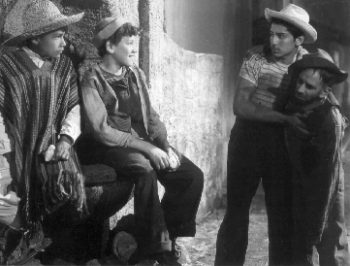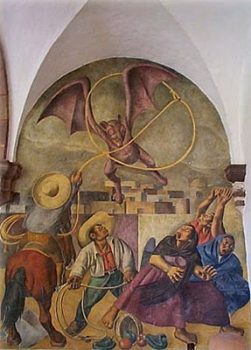Archive for April, 2010
Supernatural en español Posted by Adir on Apr 30, 2010
People in Latin America love the CW series Supernatural. It is broadcast in more than 10 countries in Latin American Spanish and in Portuguese in Brazil. If you like Supernatural or if you’ve never heard of it, here’s one of the videos from the second season dubbed in Spanish. Listening is of utmost importance when…
Latin Expressions in Spanish Posted by Adir on Apr 29, 2010
We know that Spanish comes from Latin and Spanish speakers frequently use Latin expressions to convey more formal meanings. Check them out. a posteriori – después a priori – antes ab aburdo – por lo absurdo ab aeterno – desde la eternidad ab initio – desde el principio ab origine – desde el principio ad…
Progressive constructions in Spanish Posted by Magda on Apr 28, 2010
Progressive constructions Most intermediate learners of Spanish are familiar with the present progressive tense (presente progresivo), which is the most common progressive construction. The present progressive tense is formed using the present tense of the verb ESTAR (to be) + the gerund (-ing form) of the main verb, called. If you need a reminder, this…
Luis Buñuel Posted by Magda on Apr 27, 2010

Ask anyone about a Spanish film director, and most people will think of Almodóvar first. However, one of the best and most influential film directors of all time was Luis Buñuel. If you haven’t seen any of his movies yet, you don’t know what you’re missing. Buñuel was born with the 20th century in Spain…
Homophones: same sound, different spelling Posted by Adir on Apr 26, 2010
Homophones (same sound) are words that have the same sound and sometimes are written with a little difference in spelling. To know which word the person is talking about you need to rely on the context. So, today let’s take a look at some common words that take on different meanings if you change one…
El Chupacabras Posted by Magda on Apr 21, 2010

There are several legendary creatures around the world which are part of local legends and lore. Scotland has “Nessie”, the Loch Ness monster; North America has Saasquatch, also known as Bigfoot; and in Asia a similar creature is called the Yeti. In Latin America, they have the scariest one of all: El Chupacabras. The difference…
Vocabulary: Art Posted by Adir on Apr 19, 2010
For those of you who are interested in learning vocabulary about art, here’s a very good list to start with. el aguafuerte – etching el artefacto – artifact el boceto, el esbozo – sketch el bodegón, la naturaleza muerta – still life el busto – bust el caballete – easel el carbón, el carboncillo –…


